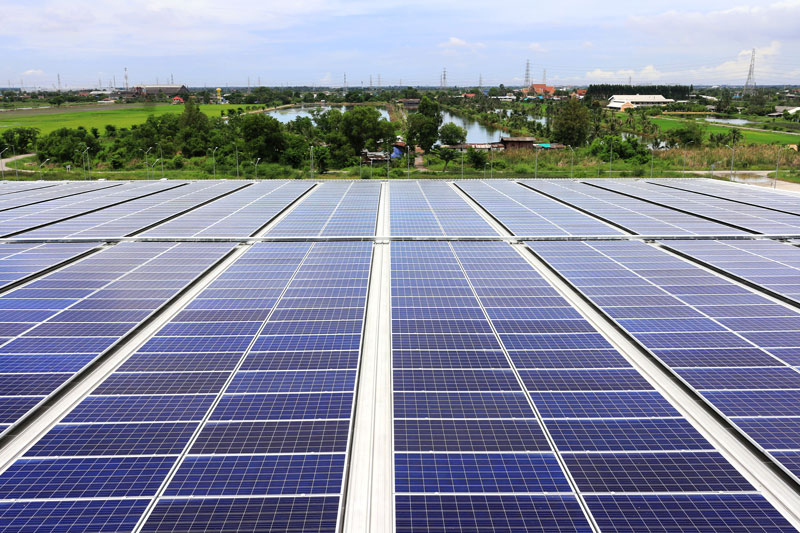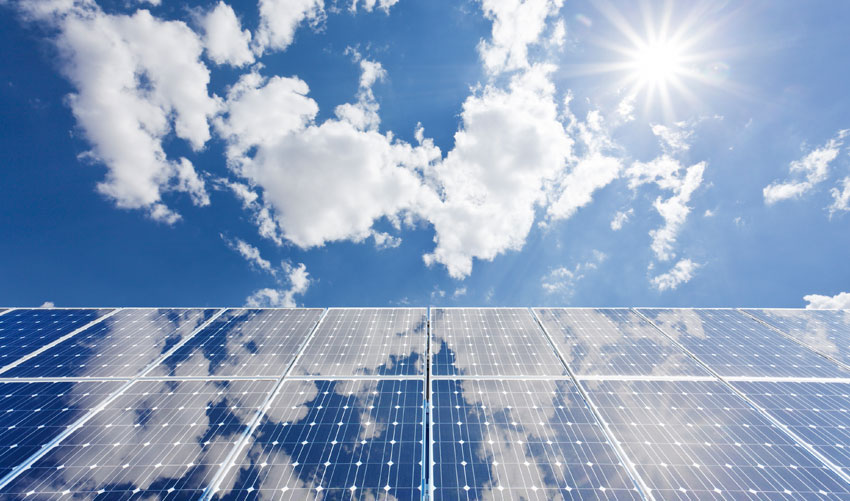Solar power has steadily risen in its availability and acceptance, as innovation continues to make this alternate power source more convenient. Yet, even if you have decided that solar power is right for you and your household, there are still a lot of different options to consider.
One of those choices is not as well known as the others and it is the type of solar panel cells that will work best for your situation. Do you want monocrystalline solar panels or polycrystalline solar panels? Here is a description of what monocrystalline polycrystalline solar panels are, as well as the benefits and disadvantages of both:
Monocrystalline Solar Panels
Monocrystalline solar panels are made from single-crystal silicon. The way that monocrystalline solar panels are created is called the Czochralski method. This is done by placing a silicon crystal seed in a vat of molten silicon. The seed is then slowly pulled out of the molten silicon. This forms a solid crystal structure around the seed, which is referred to as an ingot. Once it is possible to cut the ingot, the solid crystal silicon is finely sliced into a silicon wafer, which is made into the monocrystalline solar cell.

Here are the advantages and disadvantages of using monocrystalline solar panels:
Pros of Monocrystalline Solar Panels:
Monocrystalline solar panels are generally thought to be superior, due to the following positive aspects:
Uniform Look: Monocrystalline solar panels have a uniformed, black look that is usually thought to look better than polycrystalline solar panels. When something is up on your roof, especially, most homeowners want their solar panels to be as inconspicuous as possible. Monocrystalline solar panels achieve this with much more efficiency.
Higher Efficiency: Monocrystalline solar panels have a higher efficiency than polycrystalline solar panels. This is because the cells it creates are from one solid ingot. Therefore, there is nothing to hamper efficiency. The electrons have more room to move around through pure, one-type silicon and so, they can go faster. This is what gives Monocrystalline more efficiency than polycrystalline. Monocrystalline solar panels can reach up to a record-breaking 21% efficiency, while polycrystalline solar panels range between 13 and 16% efficiency. The difference is especially noticeable in low-light conditions.
Thinner: When it comes to devices, whether they are on your roof or in your pocket, you usually want a thinner, sleeker design. Monocrystalline solar panels are thinner than polycrystalline solar panels. Not only does this help in the ease of the install and offer more power per square foot, but it also makes it more aesthetically pleasing and less noticeable when the panels are installed on the roof, as they are low profile.
Cons of Monocrystalline Solar Panels:
There are many reasons, both from the look to the use of monocrystalline solar panels that make them a good choice. However, there are a few instances that make monocrystalline solar panels a little less appealing to the solar power system buyer:
Costly: Considering the delicacy and purity of the monocrystalline solar panels it does make sense that this is the more costly option. Unfortunately, this could be the sole reason that households are not able to choose this option for their system. Although, with the rising advancements in solar technology, hopefully, the differences will iron themselves out soon.
A Lot of Silicone Ingot is Wasted: Ironically, despite the efficiency and popularity of monocrystalline solar panels, there is actually a lot of waste that occurs when the wafers are created. Since monocrystalline solar panels need to be so pure and perfect, a lot of the time much of the remaining ingot is discarded.
Easier Circuit Breakdown Potential: Monocrystalline solar panels have more of a possibility for a total circuit breakdown, after heavy snow or rain. There are ways to wire your Monocrystalline solar panels to help strengthen the circuit connections but that is more work…and more money.
Polycrystalline Solar Panels
Polycrystalline solar panels are made slightly different from monocrystalline solar panels. Instead of using one silicon crystal, many fragments of different silicon are melted together. Once the seed is placed into the fragments of silicon, it is left to harden and the wafers are created from the whole vat of silicon.

There are still valid reasons to go with polycrystalline solar panels. So, here are the pros and cons of going polycrystalline:
Pros of Polycrystalline Solar Panels
Even though the efficiency of polycrystalline is not as efficient as monocrystalline solar panels, there are still good reasons to go for this much more affordable option. Here are the pros of getting polycrystalline solar panels:
Easier to Sustainably Produce: If one reason you are going solar is to help the environment and sustain our resources for longer, polycrystalline solar panels are the way to go. Since polycrystalline is forged with different fragments of silicon, it is easier to make more wafers with more of the product. That means that far less silicon goes to waste.
Cost-Effective: Many people choose solar because of the investment they are making. Either way, you are putting out a good amount of money to start but that will even itself out in the long run, due to the money you will save on energy costs. Yet, if you are concerned with the upfront cost, polycrystalline solar panels are the more cost-effective option between the two.
Polycrystalline Solar Panels Have History: The first polycrystalline solar panels hit the market in 1981. This means that polycrystalline solar panels have been around for almost four decades. While that age does speak to the reason why they are not as efficient as the newer monocrystalline panels, it also shows the longevity of the product. There is more research and a wider pool of people with experience that you can use to help guide your decision. After all, the more information you have on a product, and the longer that product has been around, the more accurate the reviews are likely to be.
The Process is Easier: In addition to being more sustainable, the process of making polycrystalline solar panels is simpler. The simpler the process the quicker and more efficiently it can be mass-produced. This is good if you are looking for a quicker (and cheaper) solar panel process.
Cons of Polycrystalline Solar Panels
Unfortunately, there are some cons to getting polycrystalline solar panels, besides them not being as efficient as monocrystalline solar panels. Here are aspects of polycrystalline solar panels that give some potential buyers pause:
Not Space-Efficient: The polycrystalline solar panels are not space-efficient. While all solar panels are variable in size, their inferior efficiency makes polycrystalline solar panels much bigger than monocrystalline solar panels. The reason is that it takes more panels to create the same amount of energy as more efficient solar panel models. However, if you have the roof space, this isn’t such a big deal. The problem mostly arises if you can’t fit all the panels you need up on your roof.
They are Thicker, Bulkier, and can be Speckled: Since polycrystalline solar panels are older and since they are a mix of different silicon pieces, it makes sense that they might look a little rougher than monocrystalline solar panels. Yet, considering they are going to be on your roof, it might not matter. While monocrystalline is thinner and black, polycrystalline solar panels are blue, thicker, and sometimes have different shades of blue in the cells.
Low Heat Tolerance: Polycrystalline panels are not as heat tolerant as monocrystalline solar panels. In high temperatures, these solar panels perform worse than newer models in high temperatures. Additionally, having a lot of heat in an area, systematically wearing down your solar panels will shorten their efficiency in the short term and their lifespan in the long-term.
In summation, there are a variety of reasons for people to decide to get the different types of solar panels that are on the market. Plenty of people throughout the United States opt for both monocrystalline and polycrystalline solar panels for different reasons. Not to mention there are many other reasons why people opt for various other options throughout the solar energy system process. Ultimately, you need to figure out what is going to be the best financially and benefit your lifestyle. After all, you shouldn’t have to change your lifestyle to fit your utility bill. Rather, there are plenty of options available that can help you fit your solar energy system to the way you are comfortable living.




